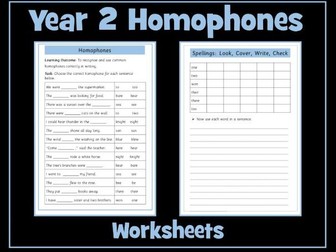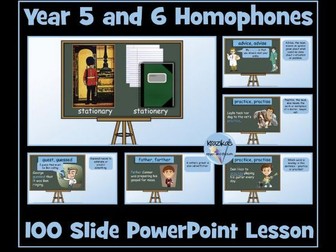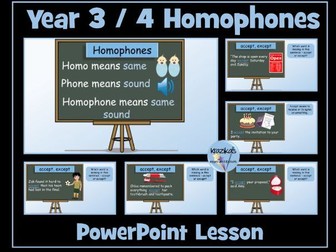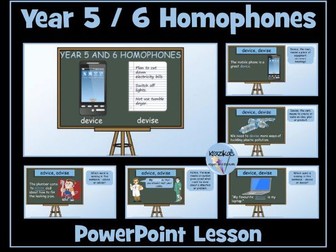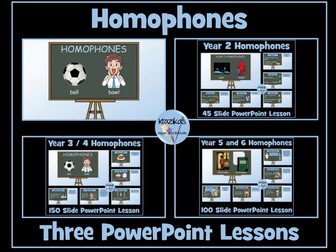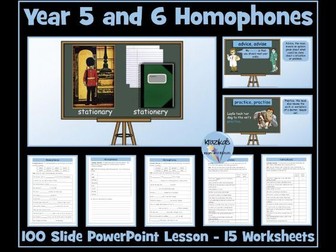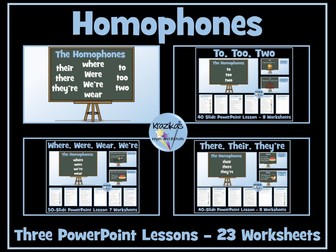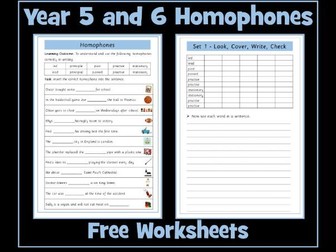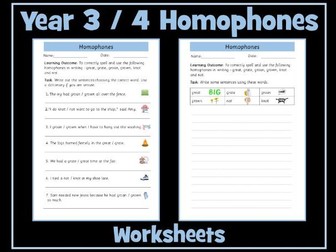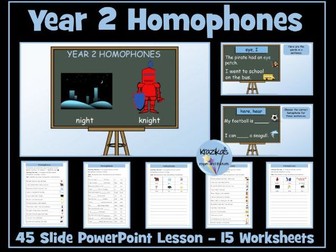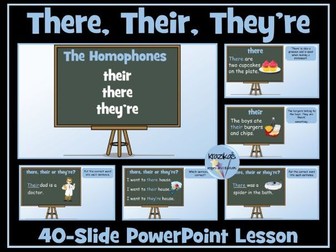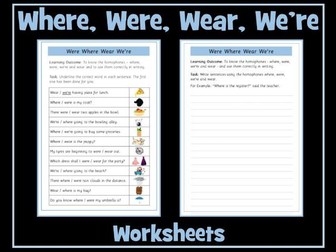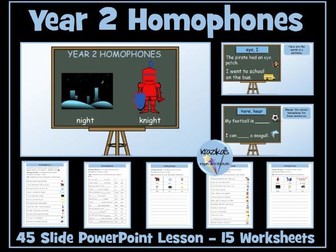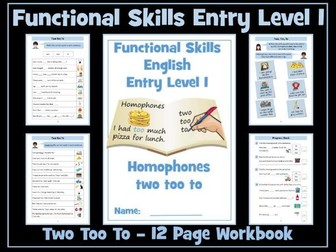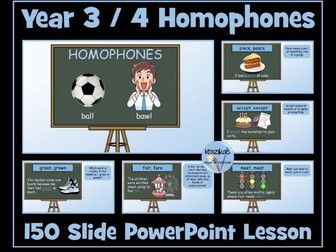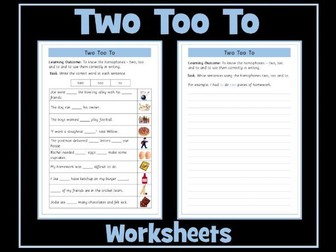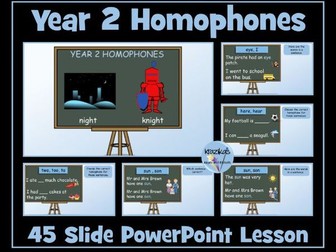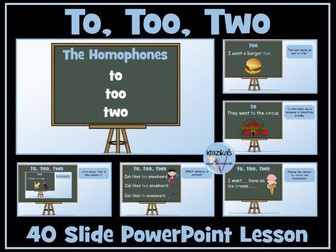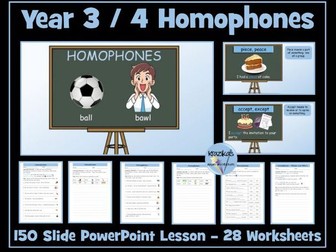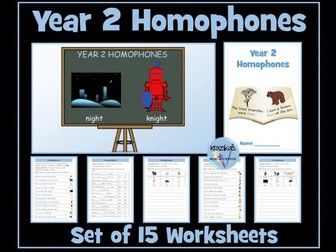
Year 2 Homophones Worksheet
This resource contains two worksheets on Year 2 National Curriculum homophones / near homophones.
You may also be interested in:
Year 2 Homophones / Near Homophones – 45 Slide PowerPoint Lesson
This is a 45 slide PowerPoint lesson on the National Curriculum Year 2 homophones / near homophones list and includes the following words – there/ their/ they’re, here/ hear, see/ sea, bare/ bear, one/ won, sun / son, two / to / too, be/ bee, blue/ blew, night/ knight. The PowerPoint provides an explanation of the meaning of the homophones with examples and opportunities for pupils to decide which is the correct homophone. It is appropriate for Year 2 pupils and older SEN students.
Year 2 Homophones / Near Homophones – Set of 15 Worksheets
This resource contains a set of 15 worksheets, some differentiated, on Year 2 homophones. Tasks include choosing the correct homophones and using homophones in sentences.
Save money and buy both resources together at a discounted rate:
Year 2 Homophones - PowerPoint Lesson and Worksheets
More Free English Resources
Thinking of publishing your own resources or already an author and want to improve your resources and sales? Check out this step-by-step guide.
How to Become a Successful TES Author: Step-by-Step Guide
